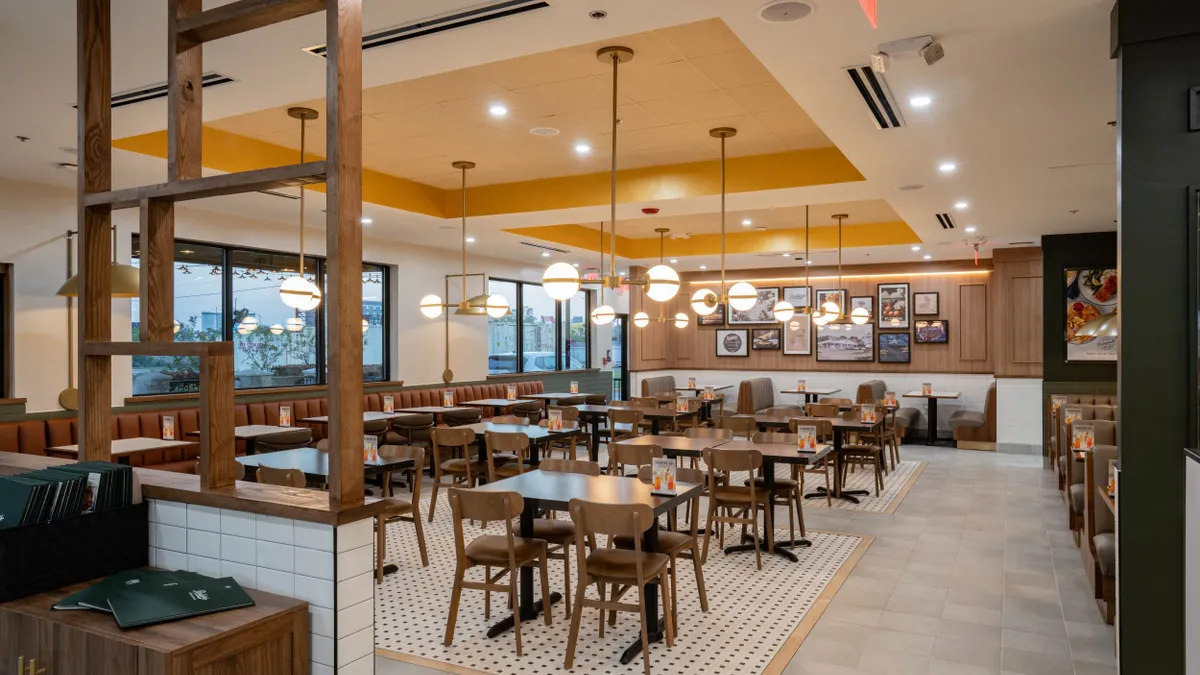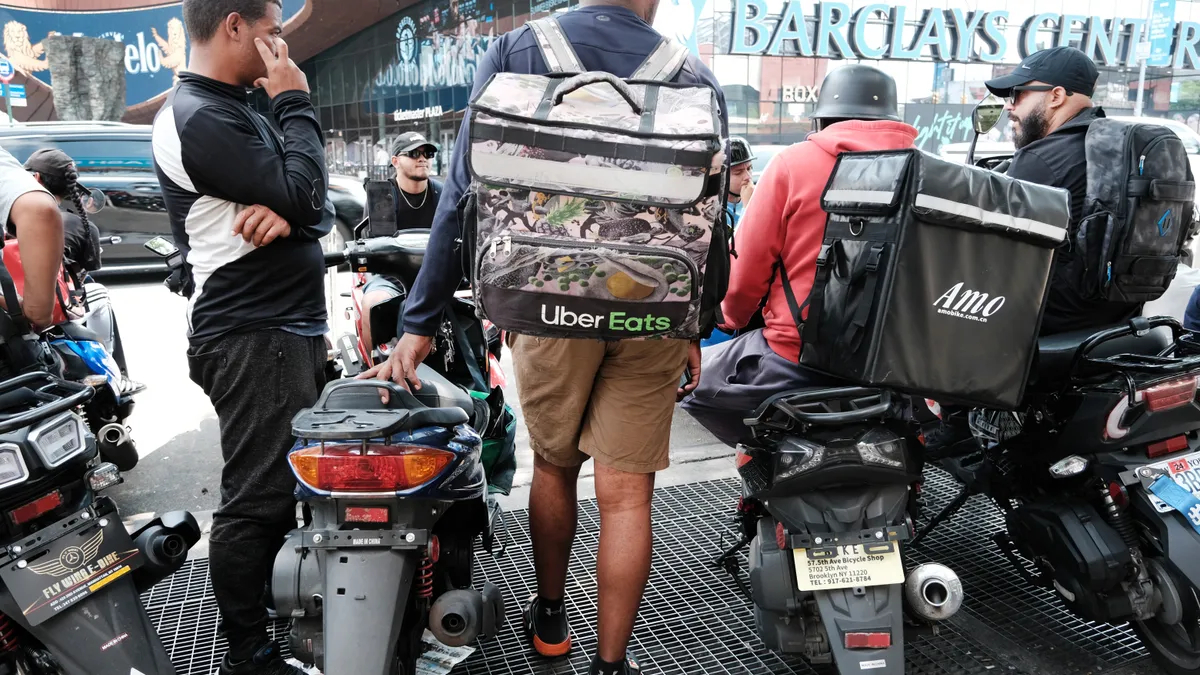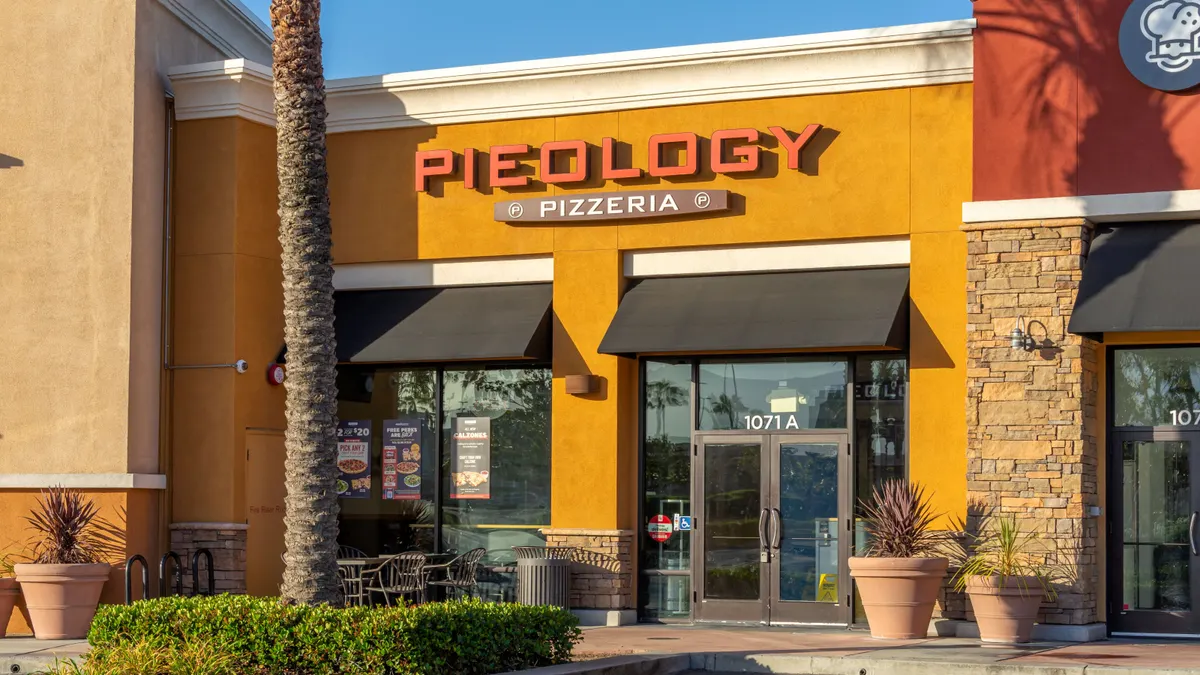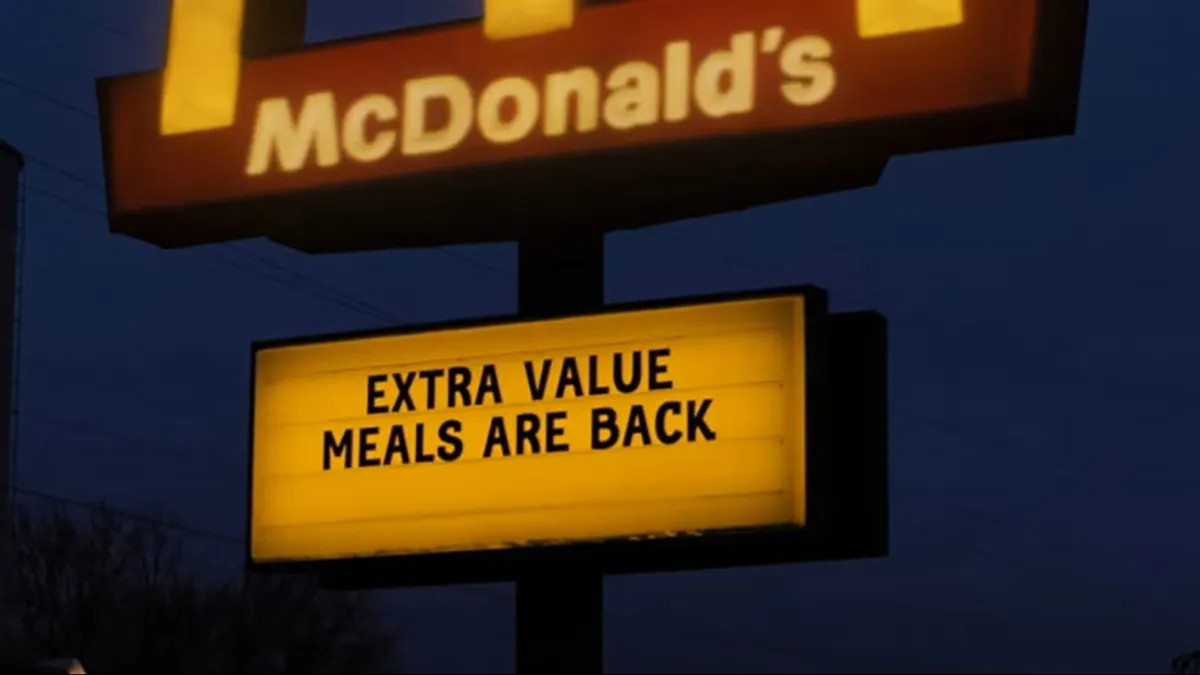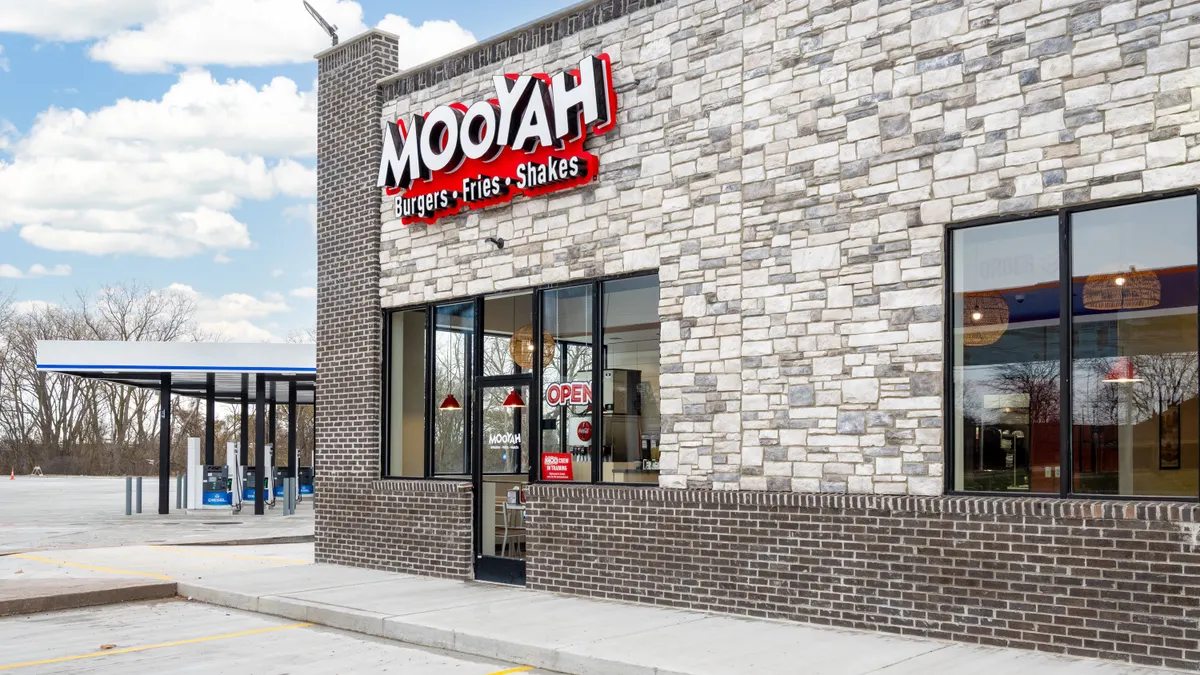When Golden Corral reopened its fast casual concept, previously known as Homeward Kitchens, as Golden Corral Favorites in April, there was a line of 100 people out the door. Just a few months after the launch, guest sentiment has been overwhelmingly positive — Google reviews rates the initial North Carolina location at 4.6-stars based on more than 400 reviews.
“Golden Corral has been on an incredible run. Fifteen out of the last 16 quarters have been positive comp store sales,” CEO Lance Trenary said. “For this new concept to be able to piggyback on Golden Corral’s brand equity means it’s coming out of the gate strong from day one.”
Golden Corral is already working on its second Golden Corral Favorites location in Richmond, Virginia, which will open later this year. The company has identified 500 markets where it could build units of the fast casual concept, Trenary said.
Golden Corral Favorites was first developed in the wake of the COVID-19 pandemic, when the chain was virtually shut down, and management began looking into other ways to reach its customers, be it through off-premise dining or smaller store fronts. The concept is also a part of the chain’s plans to create more flexibility with its real estate options, allowing it to fit into more markets.
Initial research in 2021 revealed that, because of uncertainty over the future of buffet restaurants, customers would respond better to a fast casual concept if “Golden Corral” was not in its name. But when Homeward Kitchens launched in 2023, Golden Corral soon realized that consumer perception had changed, Trenary said.
“We thought Homeward Kitchen was going to be sort of an independent, scalable opportunity for us to grow parallel brands,” Trenary said, adding that this initial iteration was helpful in moving their growth strategy forward.
Guest reaction to the menu was positive, but Golden Corral had to educate people about the Homeward Kitchens concept. Creating brand awareness in a small market proved difficult and time consuming.
“It was becoming such a drain on resources for the Golden Corral side of business that we said, ‘is it really worth [it]?’” Trenary said. “Golden Corral’s brand has become so strong in brand equity and guest sentiment score is off the charts that we said, ‘let's go back and look at that research one more time, redo it and see if that sentiment has changed.’ And it did overwhelmingly change.”
In addition to adding the Golden Corral logo to its fast casual brand, the buffet company also retooled the concept’s menu. It highlighted long-time favorites from the buffet menu, including pot roast, fried chicken, meatloaf and Bourbon Street Chicken, Trenary said. Additionally, the menu includes popular sides, bread and free soft-serve ice cream.
Since Favorites isn’t a buffet, there are multiple meal options, including an entree plus one side for about $10 ranging up to about $13 for an entree and three sides. It also offers family meals for $39.99 for a family of four, or $49.99 for a family of six, according to its website.
Customers can also get an all-you-can-eat option for about $18 if they want more of the buffet experience. Roughly 20% of guests have opted for this option, he said.
“[This] is a little surprising to us because it’s not the 160-item buffet that’s out in front of them,” Trenary said, adding that they typically have about eight proteins, 12 to 14 sides, cold items and three or four dessert options.
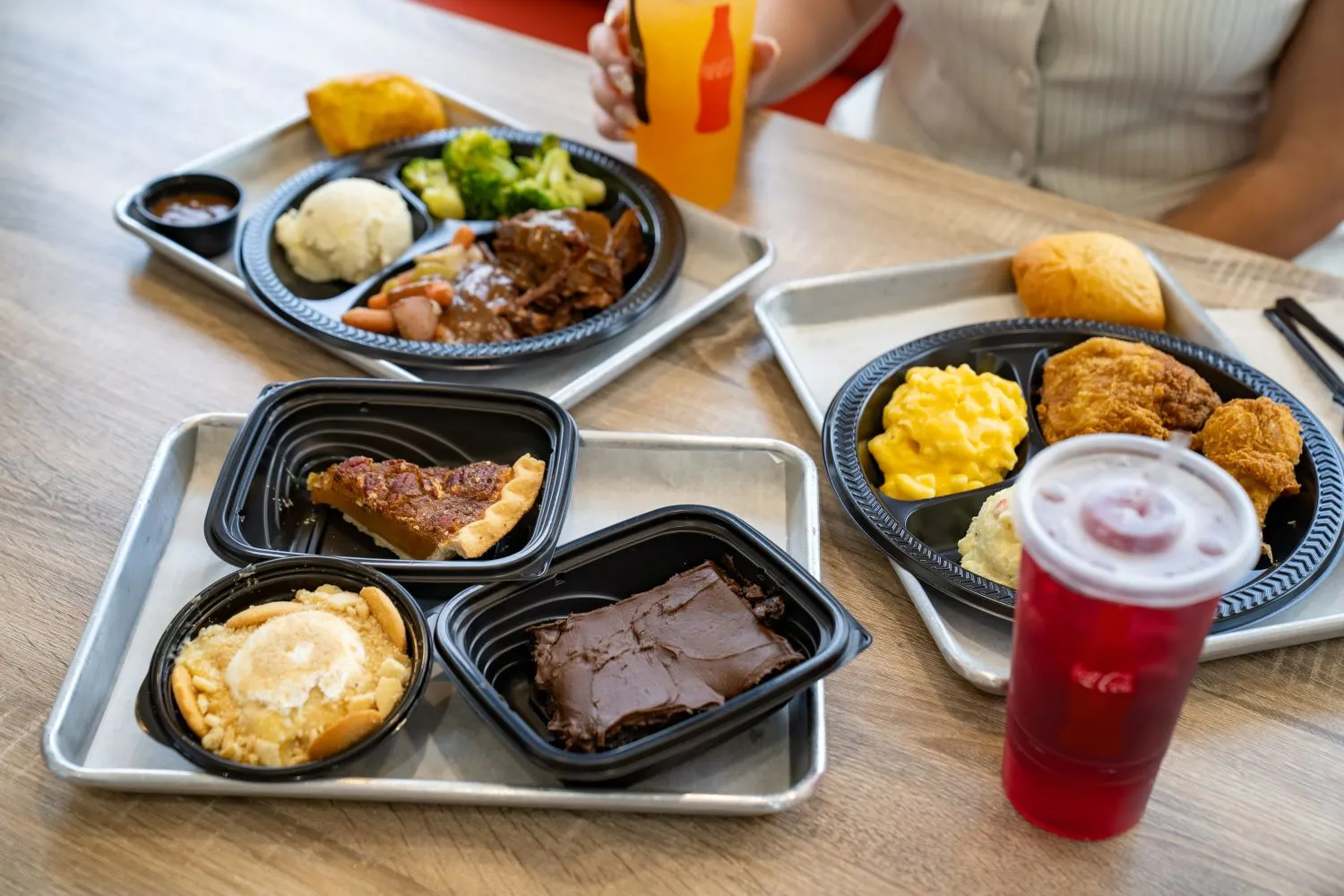
‘Fail fast, fail forward’
Homeward Kitchens taught Golden Corral many valuable lessons, particularly from a speed of service and simplicity standpoint, Trenary said.
Even though there was a preview menu board at Homeward Kitchens’ drive-thru, customers still felt pressured to order quickly, especially if there was a car waiting behind them.
To make ordering easier, Golden Corral cleaned up the menu board, placing items in intuitive configurations and making sure that combinations and family meals were very clear. The company also added photos of the food, since customers often order based on what looks good, he said.
Drive-thru times now clock in around four minutes from the time guests order to when they receive their meals at the pickup window, Trenary said.
With Favorites’ drive-thru, the company is now competing with fast casual and QSRs, so its menu had to offer a couple of handheld items for people on the go. Several sandwiches from the concept’s Homeward Kitchen days stayed on the menu.
While Homeward Kitchen was a short-lived concept, Trenary said the chain was happy with how it performed.
“We have a saying at Golden Corral that we like to fail fast, but we want to fail forward,” Trenary said. “In other words, learn our lessons quickly and figure out how we can even improve and innovate better and faster than what we were even initially considering. Bringing [Homeward Kitchens] under the Golden Corral shield is going to allow us to do that.”
Franchisee feedback about the fast casual prototype has been positive, and Trenary said several operators have already asked when it will be opened to franchising. If the company feels comfortable with the concept and the P&L results are positive, this opportunity could be available to operators in 2026, he said.
“They are so enthusiastic about what Golden Corral Favorites could mean to their own development in filling in markets that are in between metropolitan markets,” Trenary said.

Creating a flexible development strategy
Golden Corral Favorites also ties into the parent chain’s push to implement a flexible development strategy with stores of different sizes to accelerate growth.
“We're nationally advertising our brand almost every week of the year, so there's pent-up demand in a lot of markets that don't currently have a Golden Corral,” Trenary said “Either they drive to a market that has a Golden Corral or they just don't get to experience our brand.”
A range of building sizes and development options gives franchisees more control over level of investment, market type and how they want to grow their business, Trenary said.
“They love our brand, but they don’t necessarily always have $6.5 million dollars to invest in putting up their next restaurant.”
Golden Corral Favorites can be built in roughly four months, not including permitting time. Comparatively, a standard Golden Corral can take six to eight months to build, Trenary said.
The chain is also working on a 6,500- to 7,000-square-foot buffet location with roughly 250 seats. It has two restaurants in the works that are ideal for midsized markets in Tuscaloosa, Alabama, with a population of over 111,000 and in Baytown, Texas, with a population of over 84,000. The chain also has a 8,500-square-foot design that holds roughly 250 seats. Comparatively, its legacy 11,000-square-foot restaurants can hold up to 400 seats.
“This gives us a particular prototype for every size market, every size investment level, and it still gives us great return on investment, regardless of how someone wants to interact with Golden Corral,” he said.
For the smaller buffet restaurants, the chain still maintains its 160-item buffet, but it reconfigured the buffet to make it more efficient for a smaller dining room. The new designs also will have more off-premise options with a To Go station. There will be a separate entrance, third-party delivery pickup and weigh-and-pay station for customers to take buffet food to go.
Golden Corral has made several conversions of old retail and restaurant spaces. With many retailers going out of business, larger real estate is becoming available. For example, the company is converting a former Party City into a Golden Corral, Trenary said.
“We want to see if there’s a way for us to be able to accelerate our development by having the flexibility to convert, to do ground up, whatever it may be,” Trenary said. “We want to have the opportunity to put a Golden Corral in a lot of different markets. So we’re becoming very aggressive again.”








